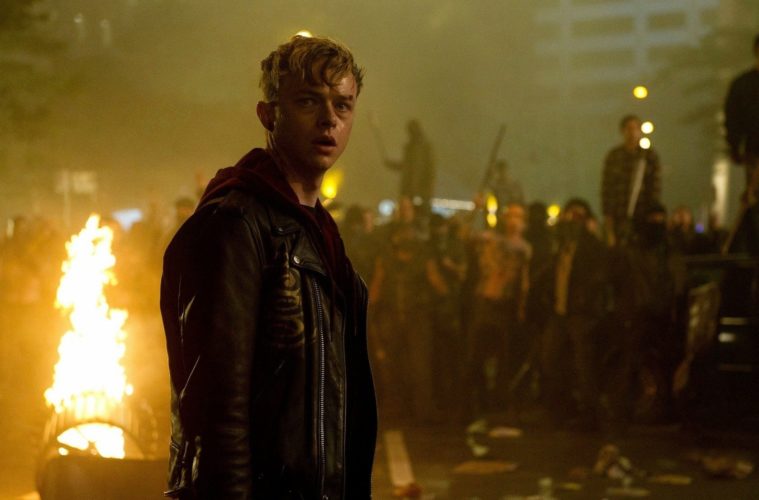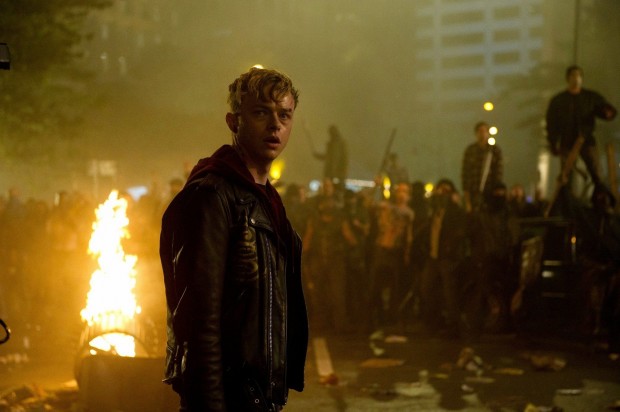
There was period of time where I became absolutely obsessed with Metallica. I had numerous albums and every time I had more money I’d rush out and buy another one of their classics. I’ve discovered other music by now, but that love is still strong. So I knew going in the likelihood of me enjoying Metallica Through the Never was pretty high. The real curiosity was how it would blend the concert—basically on steroids, with numerous pyrotechnics and stage props—and the fictional storyline following actor Dane DeHaan. Impressively, it works as a hybrid that should satisfy any casual Metallica fan while hopefully opening the door for future experimentation by other bands down the road.
During Fantastic Fest I had the great privilege to sit down with both the director, Nimród Antal, and Metallica guitarist Kirk Hammett. This piece will focus on my conversation with Antal as we discussed how they came about the puppet that DeHaan carries throughout the film, how he spoke to his camera operators during the concerts, the size of the 3D camera rigs, how much of the concert is just for this film, the way they interspliced footage from several different concerts to form one on screen, and how it feels to be part of the Metallica legend. Enjoy the conversation below.
The Film Stage: So, you mentioned that [Metallica] gave you a call. Do you know why they gave a call?
Nimrod Antal: I have no idea. It’s kind of one of those things where if you win the lottery, just don’t ask. Just sign up and sign the check, or whatever you have to do. But I was honored, when I was approached by an agent initially and they mentioned, “hey, there’s a 3D concert Metallica film, but they want to put a narrative into it. Is that something that interests you?” I was like, “yeah.” It’s an easy reaction.
Can you talk about the camera rigs used? They looked massive.
Yeah, we had steadi-cam operators carrying those 3D cameras and for those who don’t know, a 3D system is essentially two cameras, either side by side or one over the other. And it was a fascinating thing to see steadi-cam operators carry those rigs for as long as they did. Beyond that, we had wirecams, technocranes, we had standard dollies, we had locked down cameras — we had all kinds of different toys. The folks at Cameron Pace were the ones, from the get go, were there for us. The have a good sense of 3D already, going into it. I had some really big concerns regarding metal and the cadence of their songs intercut with 3D. I just thought to myself, this is just a perfect way to traumatize viewers. But they immediately alleviated my concerns and explained all the basics of 3D, that you have to kind of get a grasp of, from inner ocular to convergence to all these different things that they do. And I knew I was in good hands and I felt comfortable. It was like one of those things where you get into a car and do you put your hand on the dashboard or can you sit back and just enjoy the ride. With the folks at Cameron Pace, they were just super supportive from the get go.
All the cameras that we see in the film, those are the only cameras out there?
Yes and we did capture four shows, those positions are always varied. I knew that one day we would have 10 cameras, so I would set it up on the exteriors, going inward. On other days, I knew we would have our steadi-cam, so I would turn them over and be on the stage with the band, looking out. My director of photography, Gyula Pados, who is a super-talented guy — this is going to dumb down the process, but this is how we did it — we had a schematic of the stage. We had a schematic of the auditorium and we just sat down with different colored Post-Its and [went] camera 1, camera 2, and we started going through it. That ultimately led to a 30-camera editing opportunity. I use the word opportunity lightly, it was more like a nightmare. But 30 cameras to pick from at any given time.
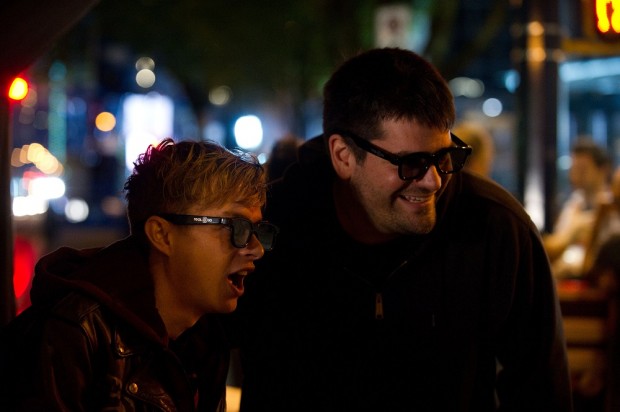
The way you stitched it together, it’s quite impressive.
We had a wonderful editing team too. Joe Hutshing came in and just killed it, did a great job.
You had many opportunities to set things up during these concerts. What was your relationship like with the camera operators while you were filming?
Yeah, it was more like screaming. [laughs] I remember Dan Brown, the tour producer, comes up to me and says, “so how are you going to communicate with your guys?” I said, “oh, we have head sets.” He’s like, “yeah, good luck with that.” Just to give you an example, when the Tesla Coil kicks up in the tests that we did, it was deafening. I mean, you couldn’t hear anything else. I thought to myself, “how are they going to play over that?” And you can’t hear the Tesla Coil when Metallica starts to play. [laughs] Sorry, I went off on a tangent.
So, how did you direct the camera operators?
Ah, yeah. I had a headset, we had control monitors, we had every single camera on a monitor. We had a basic conversation leading into it, what we were hoping to achieve and the order of the day was intimacy. We wanted to be as close to the band as we could and be on the bridge of the guitar. We wanted to capture the fifth band member as much as we could, so we had cameras turned out on to the fans. These were just basic conversations before it even started. Then once it did start, we had headsets and my director of photography was sitting on one side and Vince Pace, from Cameron Pace, was on the other.
I sat there and if we saw an opportunity, I would call out, “please, can you turn back on the audience for the explosion that’s about to come.” We had an opportunity to see the show in Mexico City, so we had an understanding of the steps of the concert, so we knew when to anticipate something. And the band was always asking, like, “hey, do you want us to do this or that?” And I was like, “dude, you guys do what you do and I’m just going to try and capture it as best as I can and make sure we’re there at the right time and the right place.”
All the chaos and props in the concert, it’s very intricate. Is this their standard concert or did you ramp it up?
They had done elements of this concert before. They’ve had Doris before on stage. They’ve had fire on stage, so there were certain elements that were certainly reminiscent of older concerts, but this concert particularly and this stage, was built for the film. So everything was for the film.
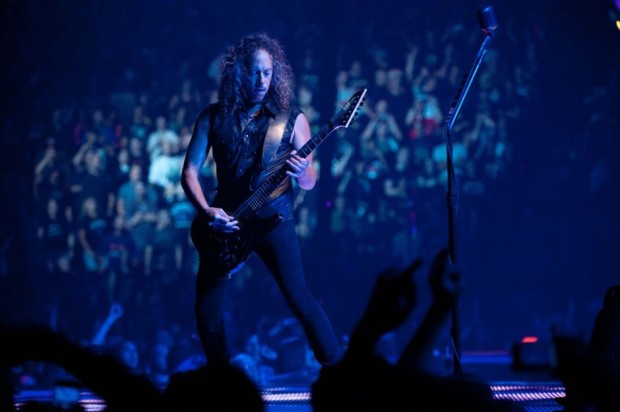
Did you pre-record some of the music or was it all taken from the concert?
It was all live concert.
You’re trying to capture what they’re saying as well and you can see them emote and say certain things to the audience, and all of that is being captured live?
Some of that was captured live and there was an attempt at one point… our ADR supervisor came in and his job is when you see these moments like you’re talking about and [ask] “are we supporting it with sound?” It’s his job to ask those questions. And there was a few that went back and we picked up a few things, like James coming out initially, that we didn’t capture the sound of what he was saying. So there was a few, but limited — really, really minor compared to the body of the film. But no, the music, the instruments, the singing — it’s everything that’s at the concert.
You’ve obviously been a Metallica fan for awhile. Do you hear their music now and see a new connection with them?
I’m part of the Metallica family now?
Yeah, you’re part of that legend now.
F–ck, man. If that’s true, I’m honored. I’m super honored. I think that whether you are a musician or you build chairs, when you do it at the level that these guys do what they do, it’s always an honor. I’m always attracted and inspired by those kinds of folks who just love what they do and do it at that next level. It’s always inspirational for me to push myself and I certainly hope one day that I can make movies the way Metallica can play music. [laughs]
The little puppet that Dane DeHaan uses through-out the movie, was that stop-motion? And in 3D?
That’s an interesting question and you’re the first person to ever ask me that question. The puppet was created by John Frame. And John Frame is an artist, he’s a sculptor, he carves and I had the honor of seeing his show, called Three Fragments of a Lost Tale at the Huntington Museum and Frame has a troupe. So what he does, he creates these characters, he carves these characters and uses vintage doll eyes from the ’20s and I think his wife helps create the clothes for them and it’s really this family endeavor. They make these incredible performers, because that’s what they are. Each digit, though made from wood, is articulated. It’s mind-blowing, what the guy does. I had seen the show and we started talking about the idea with the story with the band. And I said early on, I’d love for him to have some sort of talisman, something with him.
I immediately thought of John Frame and I reached out to him. I had reached out to him after seeing his show and I just expressed — he didn’t know who the hell I was — gratitude and enthusiasm for his work. I was like, “Man, that’s just incredible.” So when the Metallica thing came up and I realized this puppet character would be part of the story I called John and said “Hey, Mr. Frame. Is there any chance that you could build us a puppet?” And he did. Now what John Frame does is he takes these performers, and not only are they displayed in museums, but he makes stop-motion films with these characters.
So the little man is a stop-motion puppet, he has an armature like Jack Skellington, a great animated character. He’s made from wood, his eyes move about. What the actual puppet is capable of doing is really freaky. But then the gentleman up at Method, up in Canada, who did the CG for the film, had to come in and they had to 3D model the puppet. So the puppet is a mixture of actual puppet mixed with a 3D augmentation of the puppet, or rather a 3D model of the puppet and then stop-motion is interjected into the actual computer. [laughs] I think we took frames out and stuff. I’m happy that you noticed it because he does have a little kind of stop-motion movement to him and that was our intention from the get go. I want that puppet so bad. I’ve been hitting up production consistently, like, “can I buy the puppet? Please.”
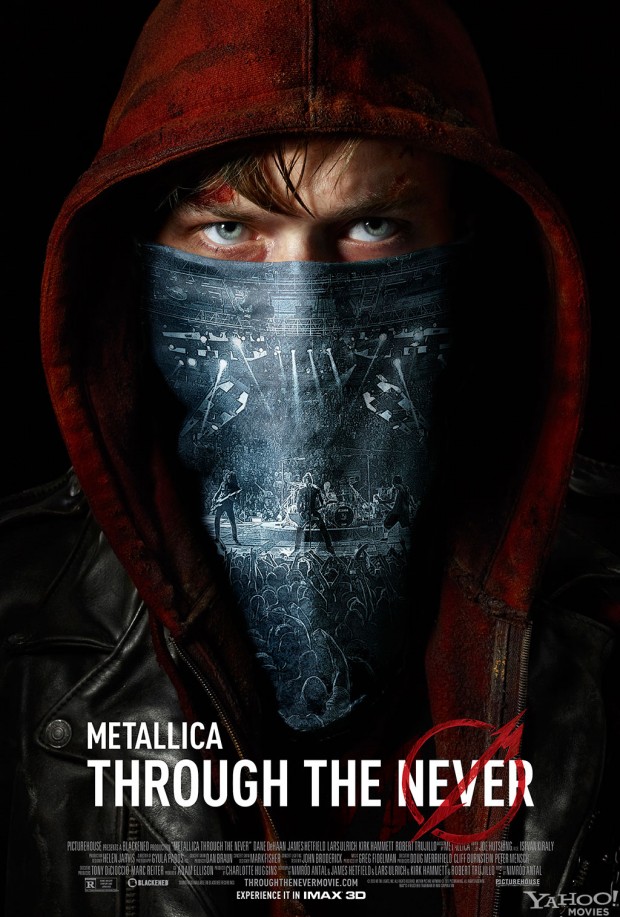
Metallica Through the Never is now in theaters.

